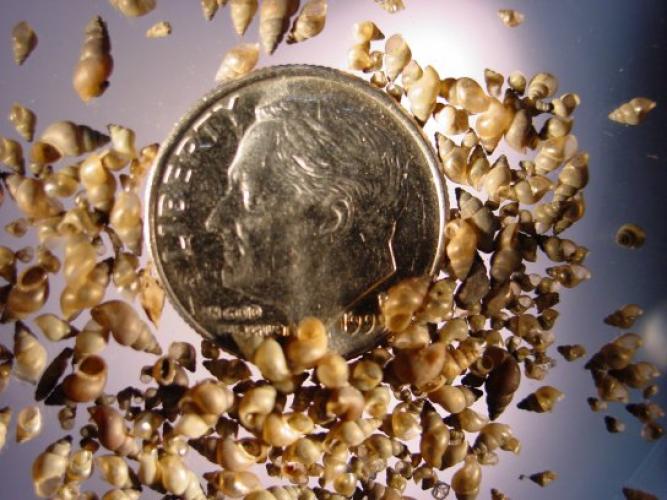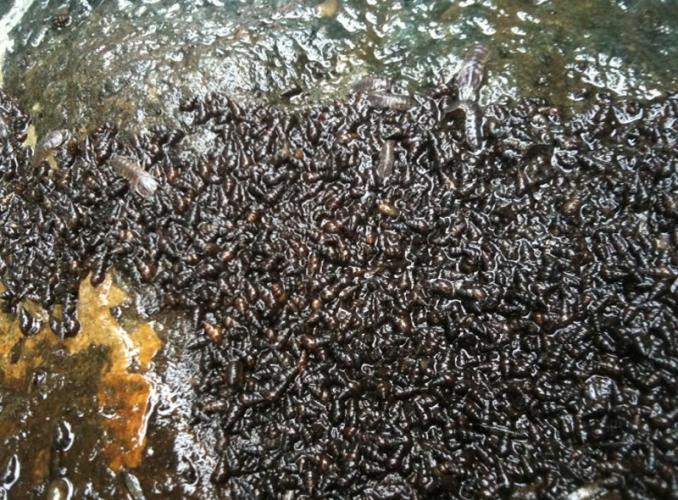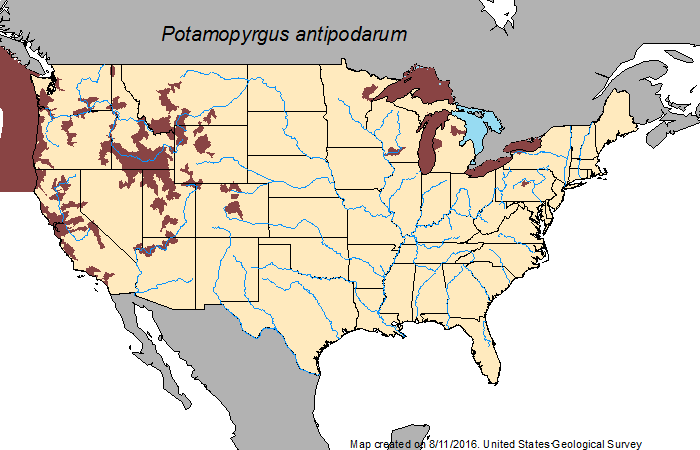New Zealand Mudsnail
Identification
New Zealand mudsnail will grow to lengths between 5 and 8 mm (0.2-0.3 in). They have a right handed spiral, and can either have a smooth or keeled shell. The color of the shell is light to dark brown.
Biology
Origin
The New Zealand mudsnail is native to New Zealand and nearby islands.
Habitat
Typically found in slow-moving, fresh water systems, the New Zealand mudsnail has also been found in lentic (still-water) environments up to 25 meters in depth, and is known to inhabit waters of varying temperatures (0-34 degrees Celsius) and flow rates.
Ecological Threat
This species is not yet found in Lake Champlain. New Zealand mudsnails have the potential to occupy an area at densities over 300,000 individuals per square meter. While direct effects of this mudsnail are unknown, it has potential to compete for resources with native fish and macroinvertebrate species. They can also clog infrastructure such as water intake pipes, and are economically damaging in these instances.
Vermont Distribution
New Zealand mudsnails have yet to be documented in any Vermont waterbody. They have invaded much of the Great Lakes area as well as many western lakes and rivers.
How You Can Help
For most aquatic invasive species, humans are the primary vector of transport from one waterbody to another. Many of these nuisance plants and animals can be unknowingly carried on fishing gear, boating equipment, or in very small amounts of water in a watercraft. The easiest and most effective means to ensure that you are not moving aquatic invasives is to make sure that your vessel, as well as all your gear, is drained, clean, and dry.
BEFORE MOVING BOATS BETWEEN WATERBODIES:
-
CLEAN off any mud, plants, and animals from boat, trailer, motor and other equipment. Discard removed material in a trash receptacle or on high, dry ground where there is no danger of them washing into any water body.
-
DRAIN all water from boat, boat engine, and other equipment away from the water.
-
DRY anything that comes into contact with the water. Drying boat, trailer, and equipment in the sun for at least five days is recommended. If this is not possible, then rinse your boat, trailer parts, and other equipment with hot, high-pressure water.
Interested in monitoring for aquatic invasives?
- Join the VIPs! Vermont Invasive Patrollers help search for new infestations so we can respond immediately and prevent them from becoming established.
Citations
Hall, R.O., Jr., J.L. Tank, and M.F. Dybdahl. 2003. Exotic snails dominate nitrogen and carbon cycling in a highly productive stream. Frontiers in Ecology and the Environment 1(8):407–411.
U.S. Environmental Protection Agency (USEPA). 2008. Predicting future introductions of nonindigenous species to the Great Lakes. National Center for Environmental Assessment, Washington, DC; EPA/600/R-08/066F. Available from the National Technical Information Service, Springfield, VA, and http://www.epa.gov/ncea
Zaranko, D.T., D.G. Farara, and F.G. Thompson. 1997. Another exotic mollusk in the Laurentian Great Lakes: the New Zealand native Potamopyrgus antipodarum. Canada Journal of Fisheries and Aquatic Science 54:809-814.


